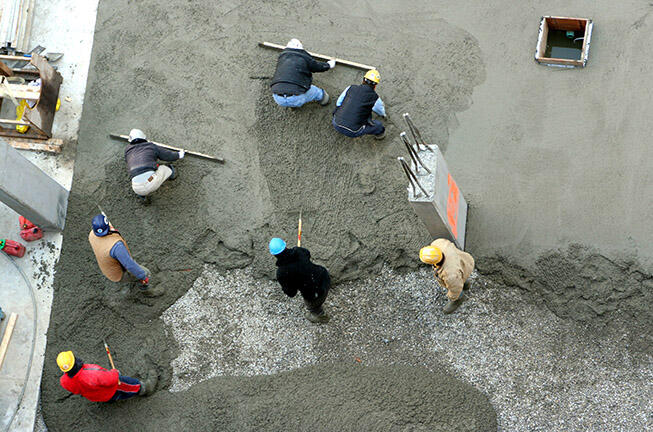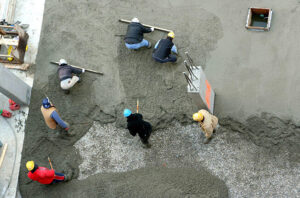Today, concrete being known for its sustainability and versatility has still remained as one of the most popular materials used in building structures. Thus, concrete contractors have also a share of this emerging popularity. As a matter of fact, they are considered among the most in-demand shareholders in any construction projects. Competitiveness is still a natural trait and with the continuous demand with these professionals, it drives them to be better at what they do and provide. Thus, it pushes them to find ways to remain in that position. Discovering new concrete construction trends, applying it, and getting the latest updates are few things they do. Construction scheduling software is one of the great software tool options available today and used also by the majority of contractors for scheduling purposes. However, concreting methods and processes are not found easily in terms of implementation. Concrete contractors, as a result have been challenged with such issues every now and then.
Furthermore, concrete has become recognized as the leading artificial building products these days. Two of the things that contribute to its popularity are its excessive strength and heat-proof properties. Concrete is also labeled as a robust man-made material. However, despite the amazing characteristics being defined on it, still, this tough-look material also has its own vulnerabilities and weaknesses.
Concrete failure does happen in many instances. The failing episodes are ultimately possible if careful measures are not taken comprehensively. This is an issue that contractors are still dealing with and expected to have full awareness of it. Here are 5 ways/times that concrete is proven to be prone to failure:
- Improper raw materials that result in poor quality concrete
In many cases, the raw materials being used are one of the probable reasons for the concrete to fail. A wrong choice of materials is definitely the very reason why and so this is because of the bad quality. If not more, the mixture is as equally important as the raw materials. The ratio of how every raw material is being added is tremendously important. But then again, not every time the ratio is taken into consideration. Shortcuts usually happened because the goal is to save money and time. This truly is the reason why the concrete’s quality is extremely poor resulting in fragility thus, easy to break.
This never becomes a debate towards the concrete contractor since they are taking all accountability with the results of it. There are excellent choices for materials and the need to be wisely selective is necessary. Also, having and using builder trending software Like Pro Crew Schedule for the management of materials and other resources to be used has been greatly useful for contractors like them. Listing and monitoring the materials is easier this time around with this software tool being used.
- Poor finishing that results in trapped air
Poor finishing is clearly another common issue when it comes to applying concrete. Because of poor finishing, an adequate amount of either water or air will possibly get trapped in between the concrete. The trapped water and air is believed to be the one primary cause of why the strength of the slab is reduced at certain points in time. If the strength from the slab is often reduced, it is proven to be severely dangerous because it just means that the concrete is getting weaker.
Contractors should determine other factors that lead to this conflict. One of their responsibilities apart from scheduling for construction is to make sure that every weak point is identified whether for concrete methods applied, materials being used, or even the involved crew. The next step will be looking for effective ways to solve the different issues being faced. Project management software is proven to reduce hassles and uncertainties when it comes to handling the project and team. The amazing this is, it certainly promotes efficient project management that contributes to the overall success of a project.
- Overfilling concrete further than the point of failure
This particular issue is most surprisingly more usual and common. There are actually several kinds of concrete that exist and used today and each has demonstrated various different levels of strength and capacity. It is important to know what an appropriate type of concrete must be used and this responsibility is a serious thing that contractors have been dealing with. For instance, if the concrete will be used for building structure that is expected to strongly support a large weight, the very ideal type of concrete to be used is reinforced concrete. However, in some cases, cutting costs is necessary and this pushes concrete contractors to use the wrong type of concrete in order to get things done the quicker way.
This way of thinking and decision-making of contractors should be avoided. Otherwise, concrete application and the overall results from that application will fall down. Concrete contractors must be wise enough not just in implementing strategies but also in scheduling projects appropriately that could help them with any of their construction works while having also the goal of reducing errors. Deploying a certain construction schedule software is incredibly beneficial and that is proven time and time again.
- Concrete is softened due to sulphate attack
Water that is containing a high level of melted sulphates can absolutely cause the concrete to soften. Thus is due to crystallization as well as expansion. In a few recorded cases, internal sulphate attack is also possible all because of higher curing temperatures.
- Concrete cracking because of Alkaline Silica Reactions
Humidity can really be an issue sometimes. There are instances when aggregates that contain alkali and silica have been overexposed to humid conditions. If this is the case, the result will be the formation of a gel. The gel is the factor that causes cracks within the concrete. Despite it wasn’t as considered as a major type of concrete failure, still, the formed gel is an easy way to fail the concrete. This issue is sometimes overlooked. On the later part when being ignored, pot holes are slowly forming as well as crumbling in any buildings, concrete pavements or etc.
Most Common Causes of Concrete Failure
Earlier we discussed about the several proven times concrete has been prone to weaknesses. This time around, what causes the failure of concrete will be discussed. Below is a list of some of the most usual causes of concrete failure.
- Improper Inspections – Lacking of actual inspections that are usually performed by unqualified or inexperienced concrete subcontractors will result in many failures. Visual inspections are usually done every single time right after the concrete is applied and even during the process of utilizing and applying it. Concrete contractors have to monitor each process done by the crew from start to finish. One way to effectively manage and track the crew is through the use of crew schedule software. Because of this tool, subcontractors are a subject of tracking, the tasks assigned to them, and the time they consumed working. There is a couple of leading construction management software tool today in the software market. Pro Crew Schedule is certainly on the top list. A free live demo can be accessed for free. Request now.
- Flawed design – several of the failures that often result from flawed designs usually relate to the stability of the structure wherein the formwork has collapsed due to excessive loads. Additionally, every time the formwork is reutilized, the load capacity is usually lessened. This factor is absolutely harder for concrete contractors to measure.
- Defective components – components such as formwork can be the primary reason when it is being removed or damaged. When formwork is removed for an instance even before the concrete will be properly cured, it causes the concrete to fail. Concrete experts have to be aware of this matter particularly when it comes to budget requirements. It is often about the budget limit that could lead to this conflict.
- Inadequate foundations – concrete has a tendency to collapse when being placed on weaker soils. Foundations will possibly be failing during the transfer of loads to the ground. Concrete contractors together with their team must ultimately be reminded to take the job seriously. The concrete foundations are one of the aspects they have to focus on. With the proper choice and use of materials and other necessary resources, the job will be easier to execute. However, project management is also taken into consideration as well as construction crew management for the sake of the entire participating crew.
Key Takeaways
Many times, concrete has been considered as a generally easy material to manage. But the thing is, contractors like you can run into huge conflicts if the concrete wasn’t worked on appropriately. Concrete issues vary and it could be because of lack of inspections, wrong used of materials, unsuitable finishing, and many more causes that have been mentioned above. The lesson that this blog is trying to imply is contractors shouldn’t overlook signs if there is anything odd they have observed. Taking actions should be the first move.





